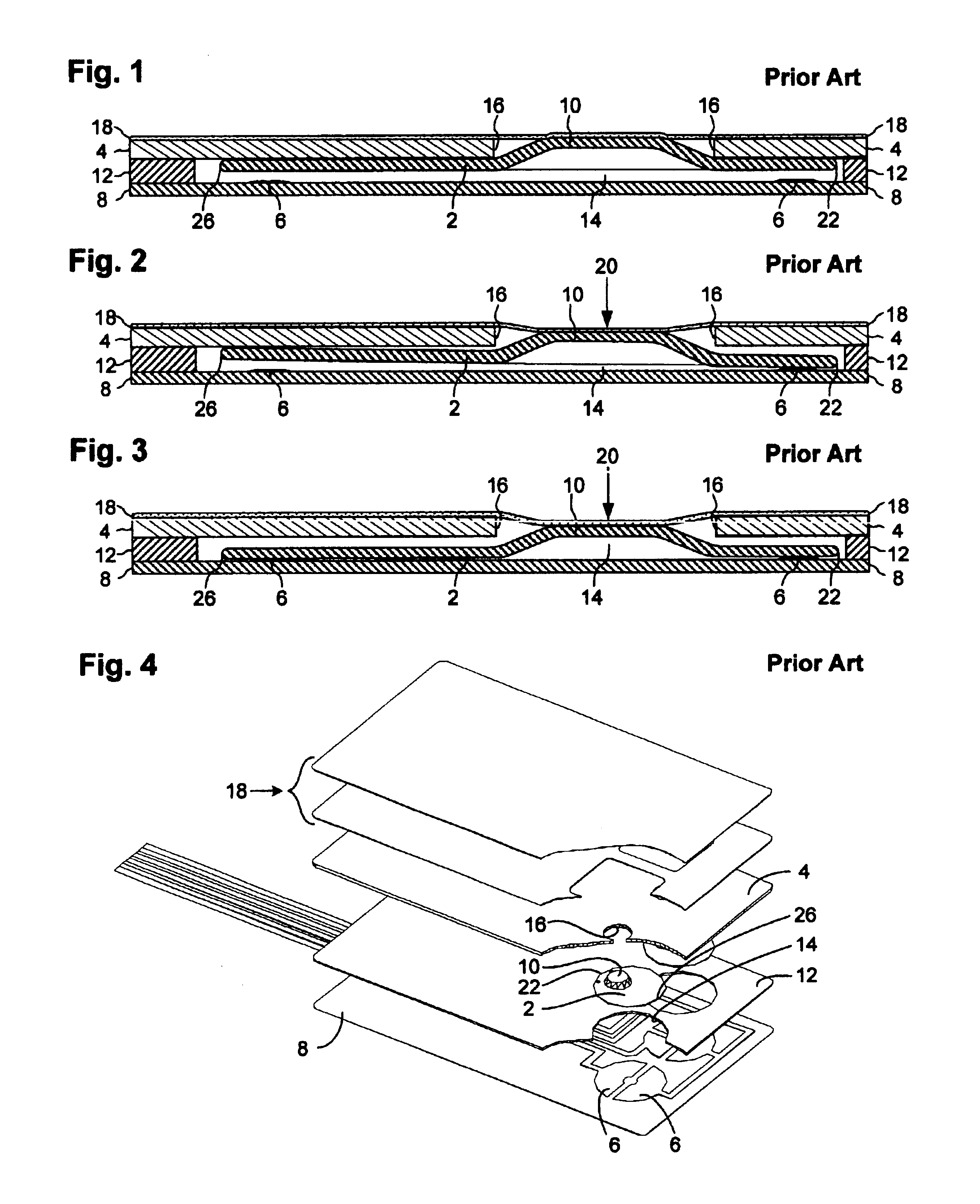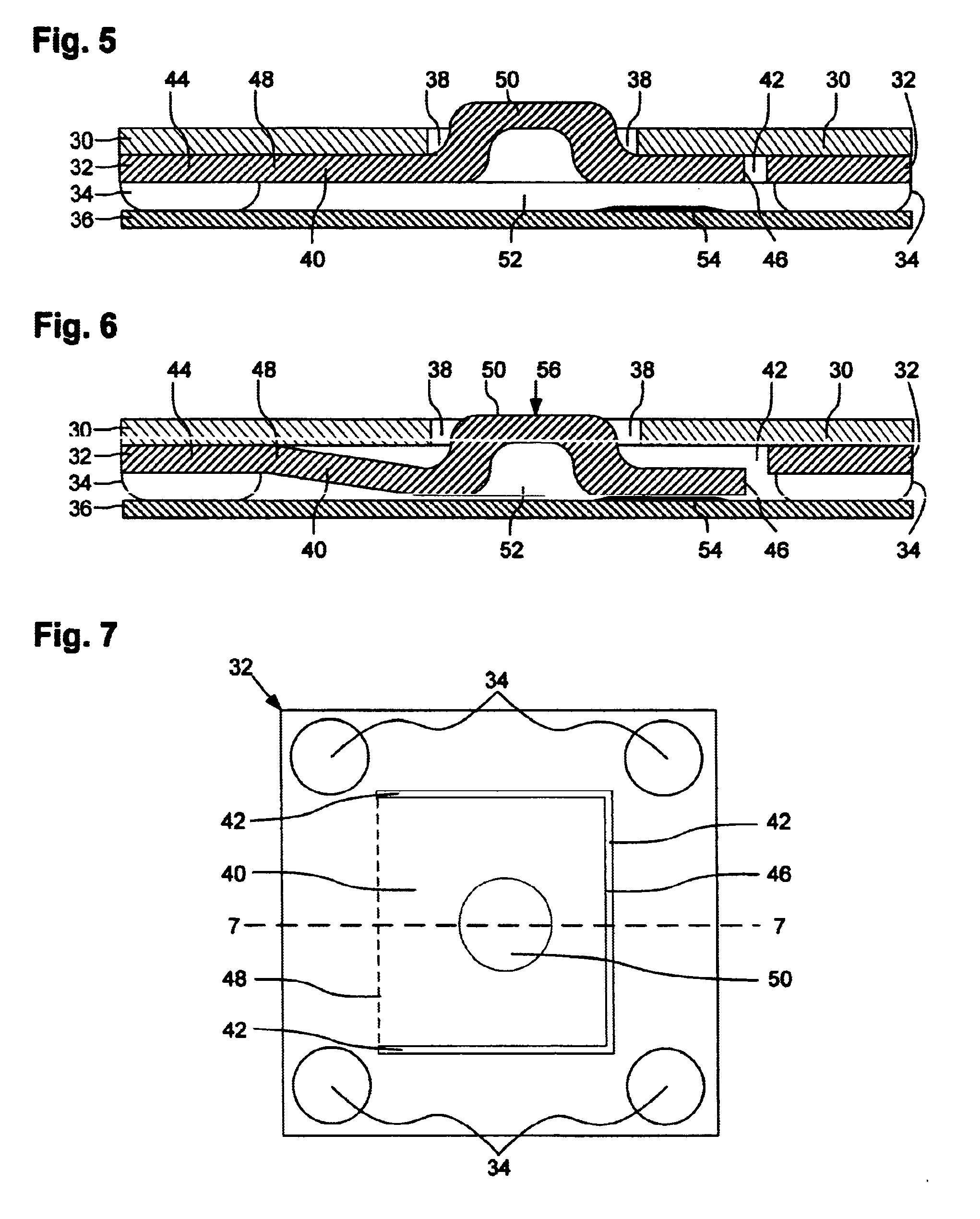Flexible magnetically coupled pushbutton switch
a pushbutton switch and magnetic coupling technology, applied in the direction of contact surface shape/structure, emergency actuators, contact surfaces, etc., can solve the problems of high cost per switch, high cost of stamping and plating armatures, and the cost of aligning/positioning the numerous switch layers, so as to achieve low cost, not rust or corrode, and easy to make
- Summary
- Abstract
- Description
- Claims
- Application Information
AI Technical Summary
Benefits of technology
Problems solved by technology
Method used
Image
Examples
Embodiment Construction
[0016]Throughout this description, where parts do not substantially change from one embodiment to another the same numbers will carry the same meaning. The several embodiments at least include: a magnetic coupler layer 30 having an opening 38; a magnetic flexible layer 32 having a flexible armature 40; a magnetic attractive force between the magnetic coupler layer and the magnetic flexible layer; a magnetic attractive force between the magnetic coupler layer and the flexible armature such that they are normally magnetically coupled; an actuation member that is capable of passing through the opening such that the flexible armature may be manipulated by a switch user; a bottom layer 36; a spacer means that supports the magnetic flexible layer above the bottom layer such that there is an armature cavity 52 for the flexible armature; and an arrangement of electrical conductors 54 that enables a switch user to selectively manipulate electrical circuits connected to the electrical switch ...
PUM
 Login to View More
Login to View More Abstract
Description
Claims
Application Information
 Login to View More
Login to View More - R&D
- Intellectual Property
- Life Sciences
- Materials
- Tech Scout
- Unparalleled Data Quality
- Higher Quality Content
- 60% Fewer Hallucinations
Browse by: Latest US Patents, China's latest patents, Technical Efficacy Thesaurus, Application Domain, Technology Topic, Popular Technical Reports.
© 2025 PatSnap. All rights reserved.Legal|Privacy policy|Modern Slavery Act Transparency Statement|Sitemap|About US| Contact US: help@patsnap.com



